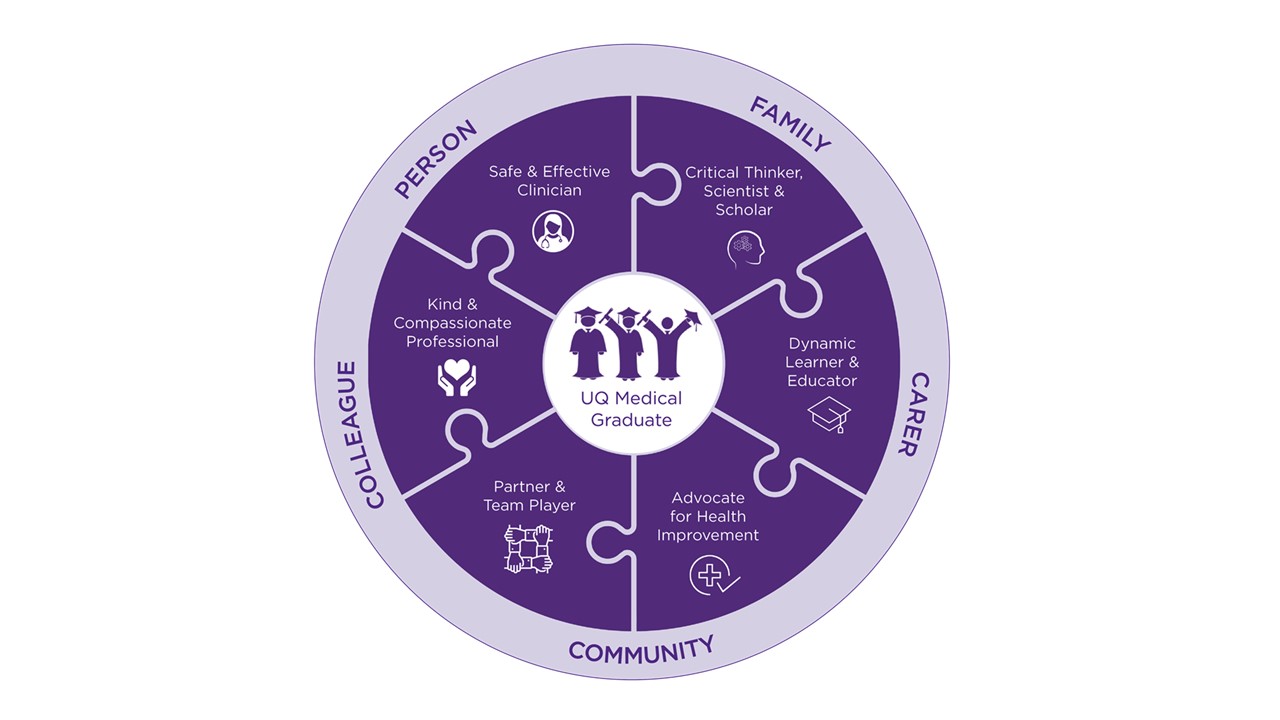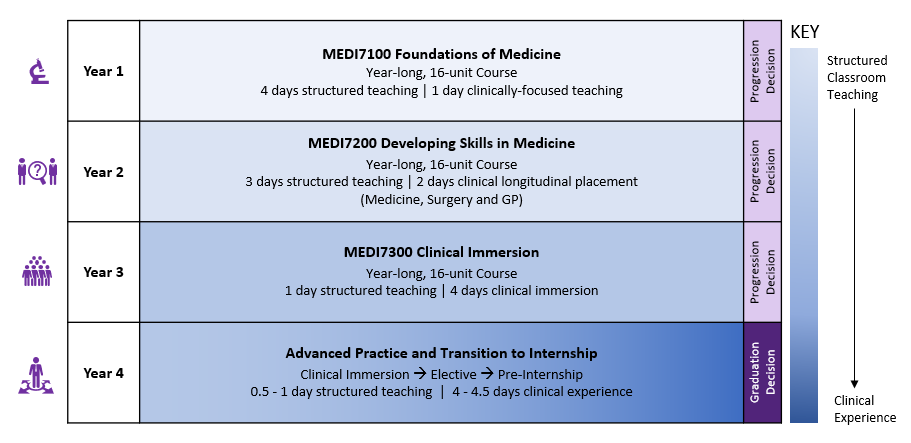UQ MD program revisioned – MD Design
Strategic direction for our new UQ MD program
Our Vision for our new UQ MD program is to nurture and educate future medical graduates who are clinically capable, team players, kind and compassionate, serve responsibly and are dedicated to the continual improvement of the health of people and communities in Queensland, Australia and across the globe.
The six primary roles of a well-rounded doctor are encapsulated in the six themes running through the entire four years of the MD program and are integral to the program’s design. Future UQ MD graduates will have achieved the learning outcomes in each of these roles.
The six roles of the UQ MD graduate
Our medical graduates will be representative of the populations they serve, and distinctive as:

- Safe and effective clinicians who are clinically capable, person-centred and demonstrate sound clinical judgement
- Critical thinkers, scientists and scholars who have a thorough knowledge and understanding of the scientific basis of medicine and can apply evidence to support clinical decision making, research and knowledge generation
- Kind and compassionate professionals who are sensitive, responsive, communicate clearly and act with integrity
- Partners and team players who collaborate effectively and show leadership in the provision of clinical care and health-related education and research
- Dynamic learners and educators who continue to adapt and have a passion for and commitment to lifelong learning
- Advocates for health improvement who stand with people and are able to positively and responsibly impact the health of individuals, communities and populations.
UQ MD program structure
Our new UQ MD remains a four-year, post-graduate program, with learning and teaching in each year building on what has come before. Learning outcomes will be staged and will build towards overarching program level graduate attributes. The proportion of learning undertaken in a clinical setting will progressively increase from Year 1 through to full clinical immersion from Year 3 and a transition to practice in the second half of Year 4.

The underpinning philosophy of MD Design is that students are engaged in active learning and enabled to meet the staged learning outcomes for each year as they progress through the integrated program. The curriculum is designed to integrate the various elements and to support growth and development in reaching the learning outcomes for each course and ultimately the graduate attributes. A key aim is to enable every student not only to reach the standards required of medical graduates but to reach their full potential as a graduating doctor.
In summary, the key defining features of the new program are:
- A simplified and cohesive program organisation including whole of program approach to assessment that is explicitly linked to staged learning outcomes
- Learning outcomes which prepare our graduates to work across a wide range of communities, including rural and regional Australia
- Earlier, meaningful clinical experience facilitated by allocation to a learning community from mid-way through Year 1
- More learner choice and focus on student enrichment opportunities
- Embedding of Aboriginal and Torres Strait Islander health and ways of thinking throughout the curriculum
- Embedding of research literacy, critical thinking and research application across the program, with a team scholarly project in Year 3 for all students
- Greater emphasis on multi-disciplinary teams and generalist/extensivist pathways achieved through longitudinal and/or repeated exposure to various clinical contexts
- A stronger focus on career planning and the safe and effective transition to internship in Year 4
- Greater emphasis on advocacy and stewardship across the broader healthcare system
- Values of kindness, compassion, equity and social accountability as fundamental to excellence in medical practice.
Notably, the six MD graduate roles will run throughout the program as themes and will facilitate greater cohesion and integration of medical and clinical sciences and clinical practice, improved student learning experiences and clearer progression pathways.
